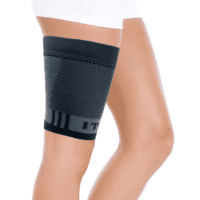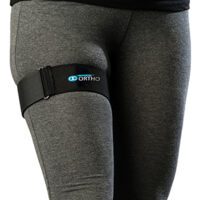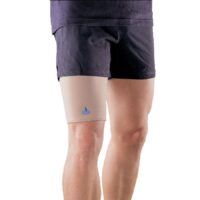
Osteitis Pubis
What is Osteitis Pubis?
Osteitis Pubis is a common cause of chronic groin pain in the football codes. It is an overuse injury, e.g. repeated trauma rather than a specific incident. However, it is not uncommon for a particular event to trigger the symptoms.
Diagnosis is usually made in the advanced stages when the pubis bones erode at the pubic symphysis. Early diagnosis can prevent the condition from progressing beyond the stage of “bone stress”.
What Causes Osteitis Pubis?The leading cause is the instability of the pelvic bones and, in particular, the pubic symphysis.
The instability aggravates your pubic symphysis with asymmetrical loads through your pelvis. Usually, forces accommodate adequately in the typical “stable” athlete, but with poor lumbopelvic control, the additional energy becomes uncontrollable and will cause injury.
Due to the instability in the region, it is not uncommon for the athlete to have experienced a previous history of groin strains, a “sportsman’s” hernia or low back pain.
How to Diagnose Osteitis Pubis
Pain is usually experienced over the pubic symphysis with referred pain into the inguinal region and the groin. Palpation of the pubic symphysis and the pubic ramus is acutely tender. Resisted muscle contraction of the hip adductors and flexors will elicit pain. Likewise, stretching into abduction and extension can provoke pain in the acute stage. Coughing, sneezing and performing a sit-up will reproduce pain. This athlete is often unable to lie flat on their back or prone.
A bone scan will highlight advanced uptake at the pubis symphysis. X-rays will show cysts and erosion of the pubic symphysis in advanced cases. MRI will show the bone stress injury and swelling present.
This condition is tricky to treat. Please consult your sports physician or physiotherapist for specific advice.
Treatment for Osteitis Pubis
We highly recommend thorough rehabilitation under the guidance of an experienced Sports Physiotherapist or Sports Physician for osteitis pubis sufferers. The return to sport should be guided by their experience to avoid future reaggravation.
Stages of Rehabilitation
- Rest is essential to unload the injured region. Active rest will almost certainly entail a cessation of running and kicking. In the acute stage, it may even require the use of crutches if walking is painful.
- Retrain stabilisation control of the pelvic girdle via particular exercises. You will need to consult your physiotherapist for these unique exercises, including core stabilisation exercises.
- Normalise the adjacent soft tissue and muscle flexibility to avoid excessive forces placed through the region. Assess and improve lumbopelvic, hip and lower limb biomechanics. Your physio will know what to do.
- Early return to sport is via less stressful activities such as cycling, swimming with a pool buoy. These activities should progress in consultation with your therapist. Use these activities to maintain your cardiovascular fitness.
- Once pain permits, light straight-line running drills may commence.
It is not uncommon for this rehabilitation process to take over three months.
This condition is tricky to treat. Please consult your sports physician or hip and groin physiotherapist for specific advice, a thorough assessment and the quickest relief from your groin pain.
Related Articles
- Groin Strain (Adductor Strain)
- This page explains the causes, symptoms, and treatment strategies for groin strains, a condition often experienced alongside Osteitis Pubis.
- Sports Physiotherapy
- Discover the role of sports physiotherapy in treating sports injuries, including conditions like Osteitis Pubis.
- Hip Flexor Pain in Athletes
- Learn about the common causes of anterior pelvic pain in athletes, including Osteitis Pubis, and how to manage it.
- Core Stabilisation Exercises
- Find out how core stabilisation exercises can aid in the recovery of Osteitis Pubis and improve pelvic stability.
- Hip Pain and Hip Injuries
- This article provides insights into various hip injuries and pain, including how they relate to conditions like Osteitis Pubis.
- Lower Limb Biomechanics
- Readers will learn about the importance of lower limb biomechanics in preventing and treating sports injuries, including Osteitis Pubis.
- Rehabilitation Exercises
- Explore different rehabilitation exercises that can help in the recovery process of sports injuries, particularly Osteitis Pubis.
- Running Injuries
- Gain knowledge on common running injuries and how to prevent or treat them, which is crucial for those recovering from Osteitis Pubis.































































